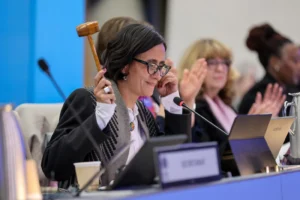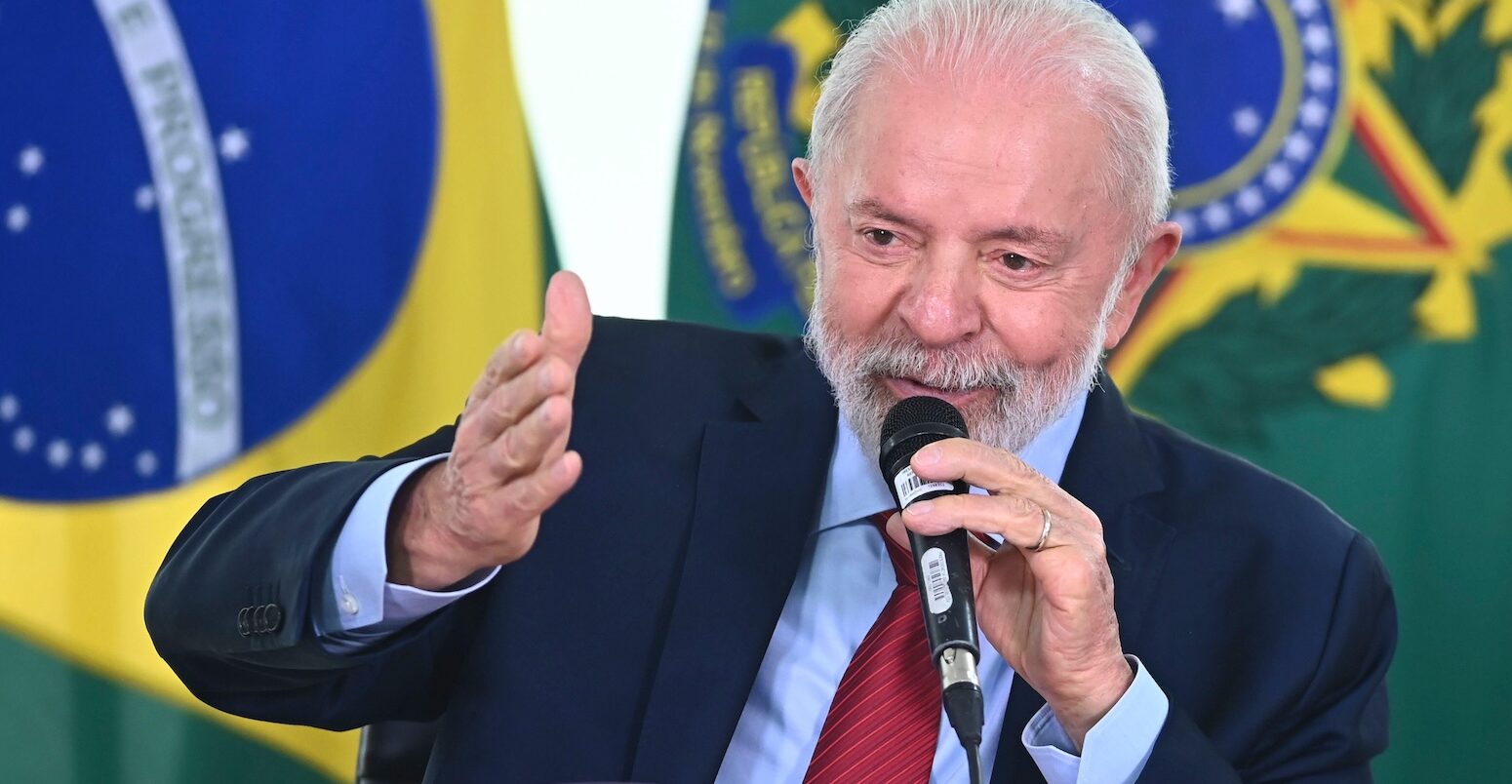
COP29: Five key takeaways from Brazil’s 2035 climate pledge
Multiple Authors
11.20.24Multiple Authors
20.11.2024 | 12:04pmBrazil’s new climate pledge, launched at the COP29 climate summit in Baku, aims to cut greenhouse gas emissions by as much as two-thirds by 2035 compared to 2005 levels.
The new pledge makes Brazil one of the first countries to release its latest plan – known as a “nationally determined contribution” (NDC) – ahead of the February 2025 deadline.
NDCs are updated every five years under the Paris Agreement, with countries outlining how they intend to reduce greenhouse gas emissions as part of global efforts to limit warming.
Brazil is hosting the next UN climate summit, COP30, in November 2025, where NDCs from all around the world will be assessed.
Brazil’s submission is keenly watched as it is one of the largest economies in the world, as well as a top-10 annual and historical emitter. It is also the world’s most biodiverse country, hosting tens of thousands of animal and plant species, with major biomes such as the Amazon and Cerrado.
In order to implement the NDC, Brazil will also be updating its national climate plan, which will include national mitigation and adaptation strategies. These will be broken down into 16 sectoral adaptation plans and seven sectoral mitigation plans, “which are intended to be finalised around the mid[dle of] 2025”.
The NDC sets two headline targets: a “less ambitious” target of cutting emissions to 1.05bn tonnes of carbon dioxide equivalent (GtCO2e) by 2035; and a more ambitious target, which would mean cutting emissions to 0.85GtCO2e by 2035.
These would result in a 59% or 67% reduction in emissions, respectively, compared to 2005 levels.
A 2016 pledge from Brazil set reduction targets of 37% by 2025 and 43% by 2030 – corresponding, respectively, to emissions levels of 1.3GtCO2e and 1.2GtCO2e.
The new targets are “ambitious, but also feasible”, Brazil’s vice-president Geraldo Alckmin told COP29.
The establishment of dual targets is a “confirmation that [Brazil] could do much more” when it comes to its ambition, Claudio Angelo, the international policy coordinator at Brazilian climate NGO group Observatório do Clima, tells Carbon Brief.
A technical note from this group warns that, while other countries – including Brazil – previously included a “band” of targets in their NDCs, the size of Brazil’s target range “creates complications to both analysis and implementation”.
Below, Carbon Brief analyses Brazil’s NDC to identify five key points that will define the country’s emissions trajectory over the next decade.
- Combat deforestation and restore degraded lands
- Fossil fuels and energy transition
- ‘Sustainable’ expansion of agricultural production
- Funding the transition, including carbon markets
- Adaptation and sustainable development
1. Combat deforestation and restore degraded lands
Since his 2022 election win, Brazil’s president Luiz Inácio Lula da Silva has pledged to reach “zero deforestation” in the country by 2030.
The country’s new NDC, however, does not explicitly contain this pledge.
The plan outlines the “coordinated and continuous efforts to achieve zero deforestation, by eliminating illegal deforestation and compensating for the legal suppression of native vegetation and the greenhouse gas emissions resulting from it”.
Observatório do Clima, a coalition of Brazilian civil-society organisations, warns that this “still allows high levels of deforestation by 2035” within the higher and lower ends of Brazil’s emissions-cutting target.
Dr Ane Alencar, the director of science at the Amazon Environmental Research Institute (IPAM), notes the uncertainty with illegal deforestation because laws can change over time. She tells Carbon Brief:
“I think it’s important to have a clear target that cannot be challenged. Brazil knows that fighting deforestation is very important for many reasons.”
(Brazil accounts for almost 60% of the Amazon, the world’s largest rainforest.)
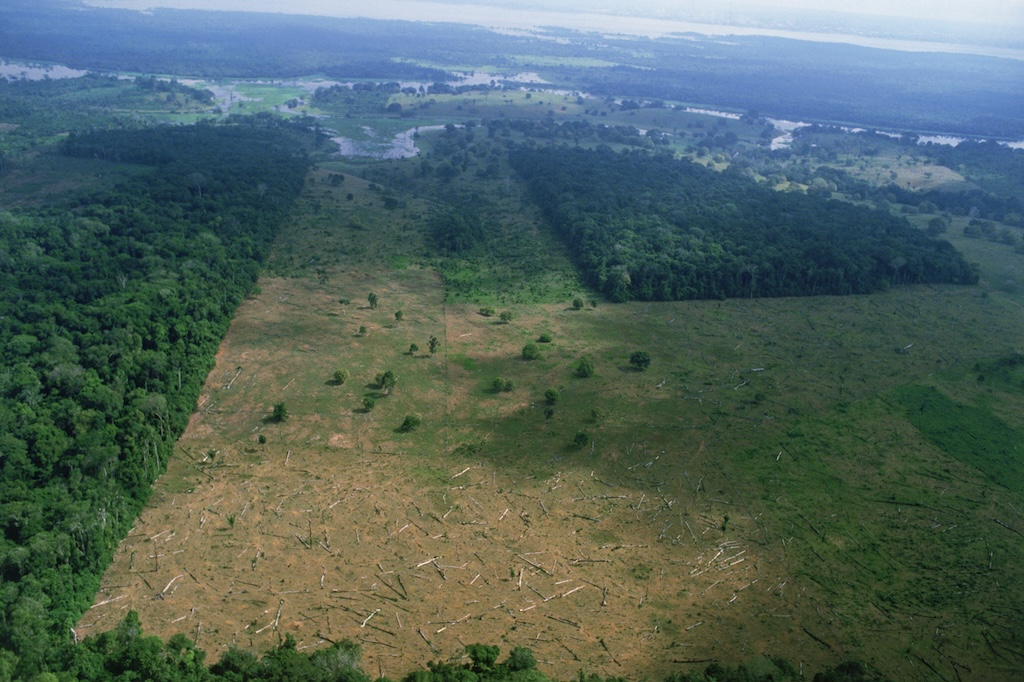
A 2023 adjustment to Brazil’s previous NDC committed to reaching zero deforestation by 2030. A 2022 update, sent when former president Jair Bolsonaro was in power, said the country committed to “eliminating illegal deforestation” by 2028.
Forest restoration will be a “key factor” in Brazil’s climate action, the new NDC says, “as it consists of the nature-based removal of greenhouse gases from the atmosphere and, at the same time, allows the goal of climate neutrality by 2050 to be achieved”.
To halt deforestation and preserve native vegetation, it adds that current restoration work will need to be “strengthen[ed] and deepen[ed]”, with more “positive incentives” to maintain forests and vegetation on private rural properties.
Alencar says that existing incentives against deforestation, such as direct payments to conserve forests, “seem not to be enough”, telling Carbon Brief:
“We need more than payments for these areas, paying them for the environmental services. We need the engagement of the private sector, for example, and we need the engagement of local governments.”
Nonetheless, Alencar notes, the Brazilian government has “done a very good job” to reduce deforestation levels in recent years.
Deforestation rates in the Brazilian section of the Amazon dropped by almost one-third between 2023 and 2024, the NDC said. Deforestation is also falling in the Cerrado after rising in recent years.
Alencar notes that stopping all deforestation is near-impossible, telling Carbon Brief:
“There are many people like smallholders and also some producers that will keep deforesting. It’s part of their rotation system…So zero deforestation, I think, is something hard to reach. But I think we can have deforestation at the minimum level.”
2. Fossil fuels and energy transition
According to Brazil’s new NDC, renewable energy sources – primarily, hydropower, but with growing contributions from wind and solar – already comprise 89.1% of the country’s electricity mix and nearly half of its energy mix.
Still, the document says, the country will “seek to expand electricity generation with an increased share of technology and clean sources”.
Several of the sectoral mitigation plans sit under this overarching goal, including one on energy (including electricity, mining and fuels), one on industry and one on transportation.
In terms of industry, the country will “reduce emissions intensity by progressively replacing fossil fuels with biofuels and electrification”. The NDC also calls for developing carbon capture and storage (CCS) technologies in certain industries.
Similarly, the mitigation plan for the transportation sector will seek to “replac[e] fossil fuels with electricity and biofuels”, according to the NDC. It also says that infrastructure improvements will “contribute to an immediate reduction in fuel consumption”.
While there are references to other national plans and policies, there are no specific numerical targets laid out in the NDC for any of these sectors.
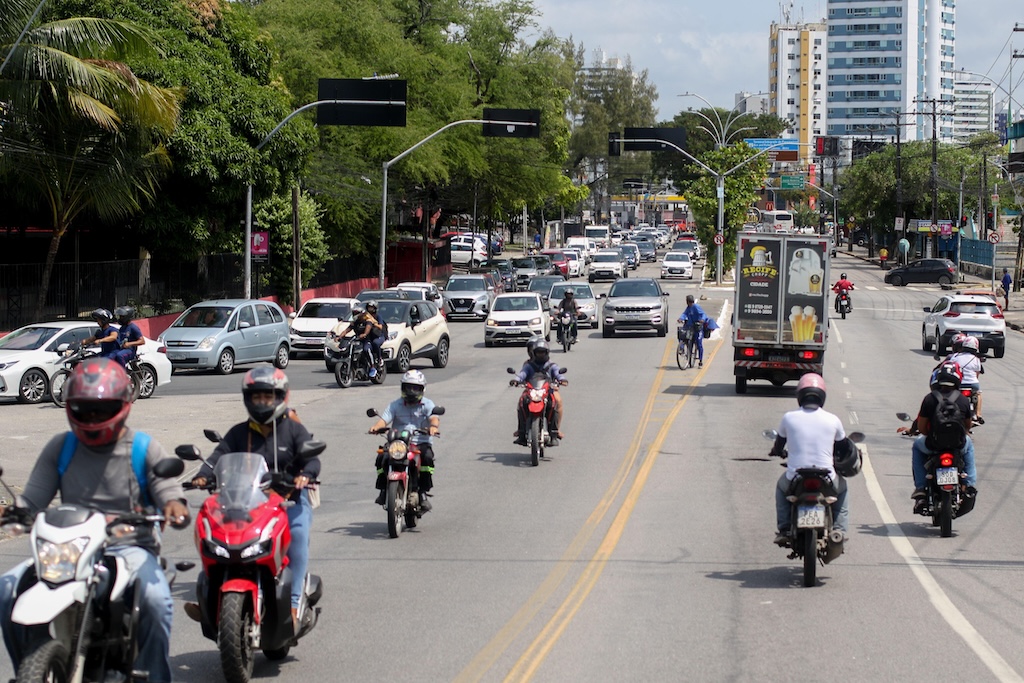
The NDC’s 26 “priority issues” include many that relate to creating a legal and regulatory framework to accelerate a transition to clean energy, including on:
- Offshore wind energy production.
- Low-carbon hydrogen production.
- Production of sustainable aviation fuel.
- Carbon dioxide capture and storage.
- Synthetic-fuel production and biofuels.
A technical note published by Observatório do Clima notes that Brazil “keeps silent about its own fossil-fuel expansion plans, implying that the problem is all in the demand side”.
On fossil-fuel phase-out, the NDC quotes the deal struck at COP28, saying:
“Brazil would welcome the launching of international work for the definition of schedules for transitioning away from fossil fuels in energy systems, in a just, orderly and equitable manner.”
It caveats that this would be done “with developing countries taking the lead” and reflecting “common but differentiated responsibilities”. (This is the principle that all countries are responsible for addressing climate change, but not to the same degree – and that those more responsible for causing climate change should bear greater responsibility to address it.)
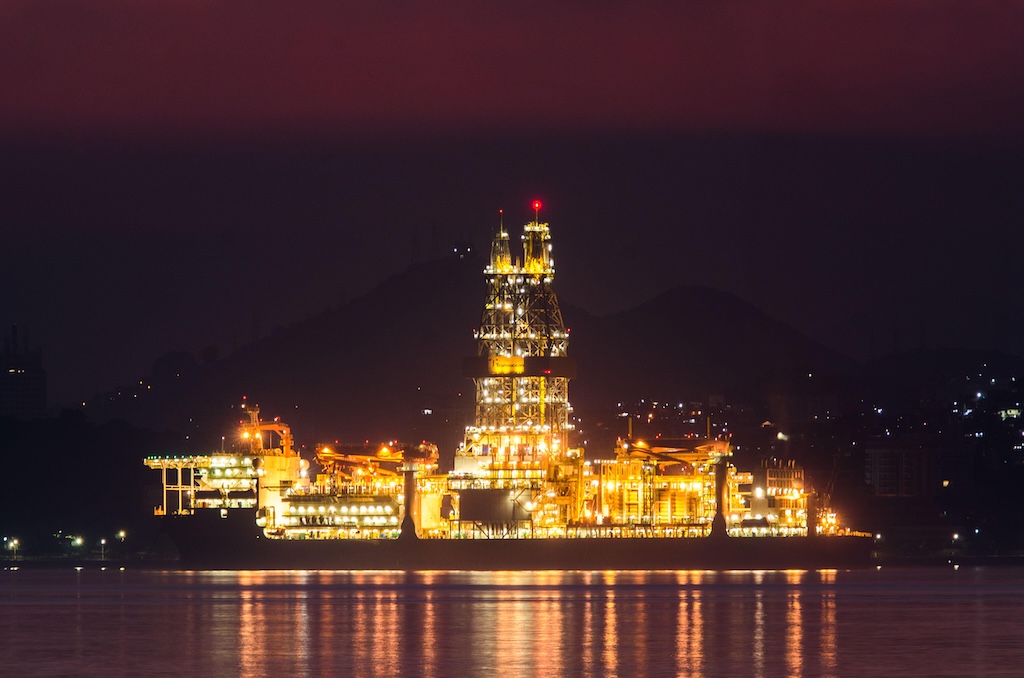
Multiple NGOs have praised this aspect of Brazil’s NDC, with the ECO NGO newsletter calling it a hidden “jewel” in the pledge.
Política por Inteiro, a Brazilian publication from the Talanoa Institute climate-policy thinktank, says that it “demonstrates that Brazil is ready to position itself as a climate leader among oil, gas and coal-producing nations”.
Alencar says the plan could have been more ambitious, but adds that she believes it is notable that Brazil was among the first to submit an updated climate pledge. She tells Carbon Brief:
“Even with all the difficulties we have in Brazil, there is a commitment of the government to actually move forward and be more ambitious [on climate change]. I think they did that, they renewed their commitment and they were more ambitious, even though I think it could be a little bit more. But I think this is an important step.”
3. ‘Sustainable’ expansion of agricultural production
Agriculture is an important sector in Brazil, with agribusiness making up almost half of the country’s exports. The sector also accounts for around a quarter of Brazil’s greenhouse gas emissions each year.
The country produces and exports vast amounts of meat, coffee, soybeans, corn and other products. Brazil intends to encourage and incentivise more “sustainable” agriculture as part of its emission-cutting efforts, the NDC says.
One of the country’s “national mitigation objectives” is to encourage the “widespread adoption of sustainable agricultural and livestock production models with low greenhouse gas emissions, guaranteeing food security for all”, the NDC says.
It adds that, in this sector, Brazil wants to “continue to demonstrate that it is possible to sustainably expand agricultural production while guaranteeing food security and energy security through the sustainable production of biofuels”.
For this, the country will rely on “two fundamental transformations”:
- Converting new areas, mostly from degraded pastures, for agricultural production, while also expanding “integrated systems” where crops, livestock and trees are grown on the same land.
- “Productivity gains” in agriculture through these integrated growing methods and an “increase in high productivity systems”.
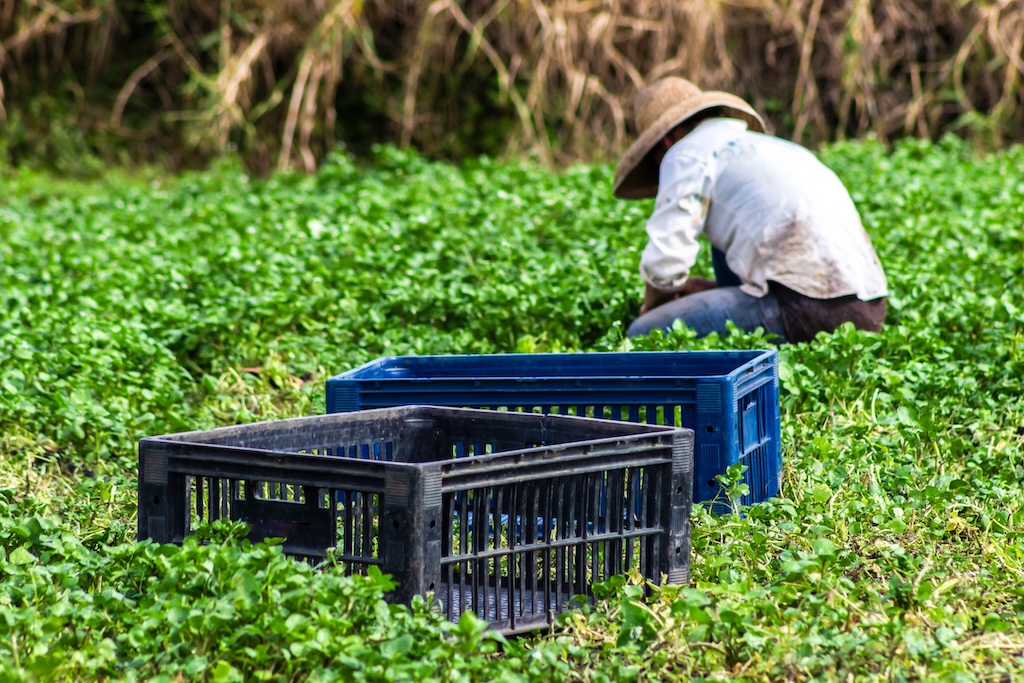
The NDC further outlines a number of plans the country has or will put in place to achieve this, such as a 2021 agriculture adaptation plan.
Further agriculture and livestock mitigation and adaptation strategies are among the sectoral plans in development in Brazil, the NDC says. Alencar tells Carbon Brief:
“I think the agriculture sector is one that can provide lots of contribution, by improving their practices, investing in technologies to reduce cattle contributions and also with soil management.”
One “barrier” for emissions-cutting in agriculture is “land grabbing in the Amazon” and other illegal activities, she notes, saying these actions “generate a burden to the sector as a whole”:
“If the Brazilian agriculture sector really goes in the direction of sustainability, then I think it’s possible to actually fulfil the NDC targets. But, the thing is, part of the sector is actually not [going] in that direction.”
Dr Karen Silverwood-Cope, the climate director of the World Resources Institute Brasil, said in a statement:
“To position itself as a climate leader, Brazil must make progress in the energy and agriculture sectors, which are projected to be major sources of pollution in the years to come.”
4. Funding the transition, including carbon markets
Brazil’s new NDC lays out an ecological transformation plan (ETP) for the country, which contains a range of financial mechanisms – both existing and proposed – that can be used to fund the transition to a net-zero economy.
The Amazon Fund is one of the most well-known financial mechanisms for supporting efforts to reduce emissions from deforestation and degradation, with more than 100 projects in its portfolio. Last year, the fund committed R$1.3bn ($226.3m) for such projects.
Brazil’s Climate Fund, established by law in 2009, but “reformulated” last year to include new financial streams, is “one of the main instruments for financing Brazil’s ecological transformation in the short- and medium-term”, according to the NDC.
The plan also points out the benefits of tax reform, noting that Brazil’s simplified consumption tax, amended into the constitution last year, created funds that have been used for “reducing regional and social inequalities”.
Sustainable sovereign bonds are another potential financing source for positive ecological change. (Sovereign bonds are essentially loans issued by the government with the promise of future repayment on a specific date.) The government has pledged to allocate the net proceeds to projects with positive environmental outcomes.
The NDC notes that Brazil issued $2bn in sustainable sovereign bonds in November 2023 and again in June 2024. These funds “will be used to control deforestation, to conserve biodiversity, to replenish the [Climate Fund], with a focus on renewable energy and clean transport, and to programs against poverty and hunger”.
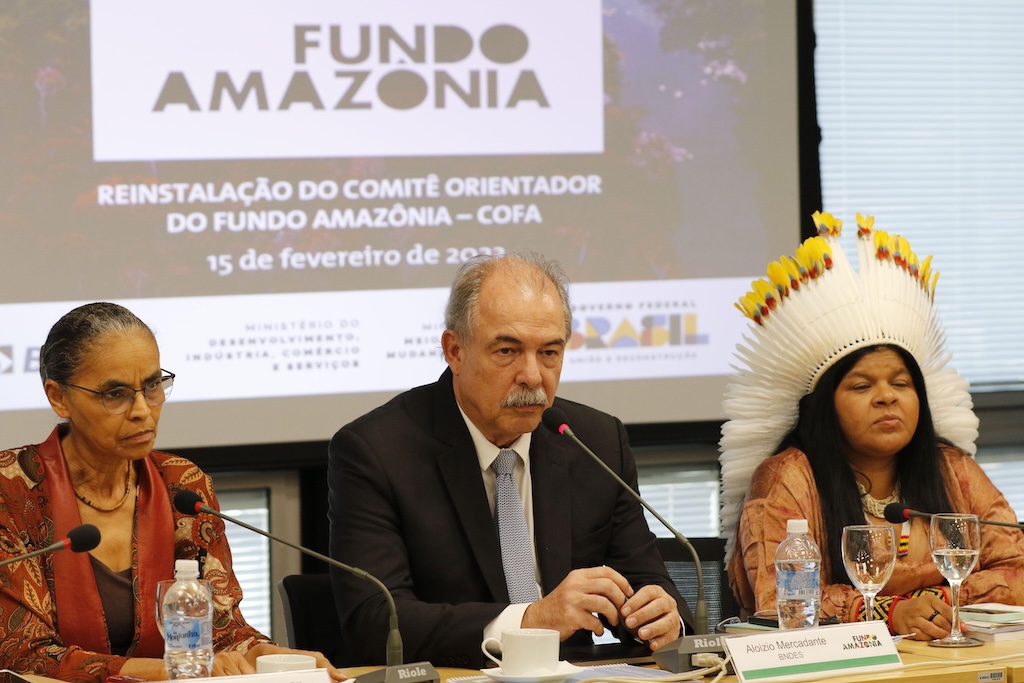
At COP28 in 2022, Brazil proposed the creation of a new financing mechanism, the Tropical Forests Forever Fund (TFFF). The TFFF “uses blended finance to generate financial returns” to pay countries for keeping their forests intact, including allocating a percentage of the funds raised directly to Indigenous peoples.
The NDC also calls for the “approval of the legal framework and regulation of the carbon market” as one of its 26 priority issues.
The Brazilian Congress is currently considering legislation to create the Brazilian emissions trading system, with revenue directed towards encouraging decarbonisation and low-carbon technology development.
The new NDC is the first time that the country “has openly stated its plan to trade emissions reductions with other countries under the rules of the Paris Agreement”, according to Política por Inteiro.
According to the NDC, the government will use the lower-ambition target of 1.05GtCO2e as the “reference for assessing the progress and ambition of future contributions” and, if it surpasses this target, “may” authorise transfers of emissions-reductions up to that level.
Claudio Angelo, international policy coordinator at Observatório do Clima, tells Carbon Brief:
“I think the institutions are there, the tools are there, and this is one of the reasons why we don’t understand why Brazil aimed so low in the NDC – because we have the institutional capacity. We have the finance tools to go much further than we are going.”
5. Adaptation and sustainable development
Adaptation measures – which aim to improve the resilience of populations, ecosystems and species to the impacts of climate change – feature prominently in Brazil’s new climate commitment.
The country will review its national adaptation plan and encourage the creation of local adaptation plans and sectoral plans (16 for adaptation and seven for mitigation) by mid-2025. Such plans will lay out sector-by-sector contributions to emissions reductions.
The NDC also commits to mainstreaming adaptation into policies and projects vulnerable to climate change, promoting public awareness of climate change and transparency and adopting ecosystem-based adaptation approaches.
The government will widen the presence and strengthen the capacities of the three branches of government – Congress, head of state and courts – to implement the goals of the NDC.
Observatório do Clima says the NDC “makes extensive and important references to the topic of adaptation”. It adds:
“This is an extremely relevant issue for a country whose population is already experiencing the consequences of the climate crisis.”
Hand in hand with adaptation, Brazil’s new NDC sets out plans to use the state’s institutional and financial capacity to “foster” sustainable development and a just transition while reducing inequalities.
For example, its national adaptation objectives include increasing the resilience of populations by promoting water and energy security and socioeconomic development.
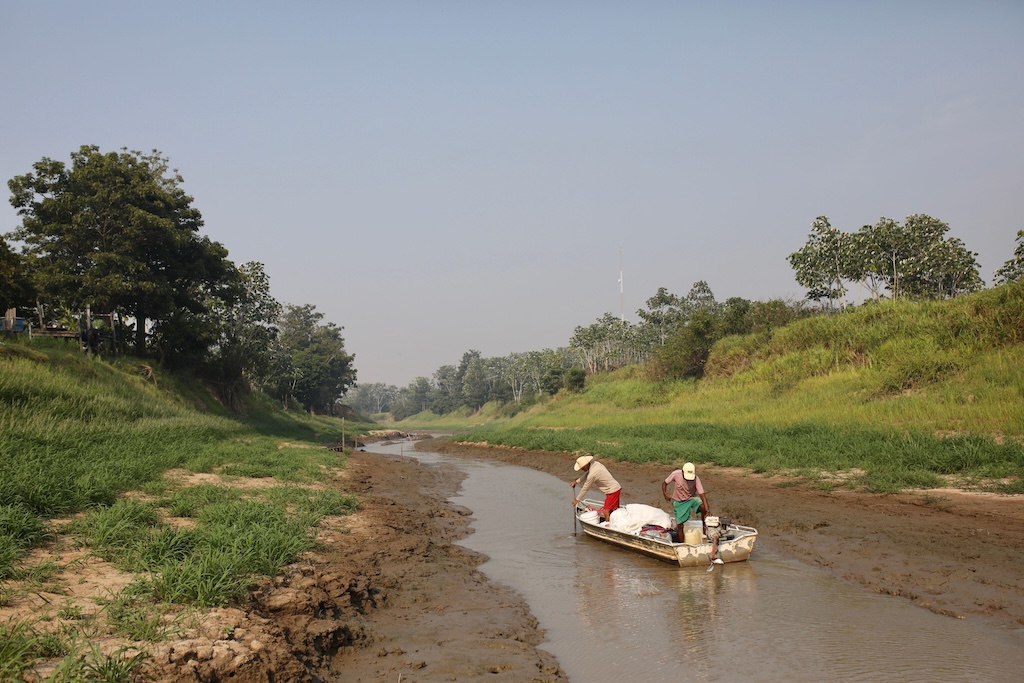
The NDC mentions a “renewed emphasis on promoting sustainable development” and cites recent policies such as the National Bioeconomy Strategy, which aims to ensure that products and services derived from biological resources are produced in a sustainable way. The bioeconomy strategy will aid the state in conserving biodiversity, decarbonising energy use and promoting recycling of such resources, the NDC says.
Elsewhere, the NDC says that the country aims to develop the Brazilian Sustainable Taxonomy, a classification system of projects that benefit the climate, environment or society.
Additionally, Brazil will expand financing and improve insurance mechanisms for sustainable sectors and practices. It will deploy an investment plan for boosting sustainable development called the Ecological Transformation Plan, comprising various economic instruments to encourage sustainable investments. (See: Funding the transition, including carbon markets.)
Angelo, from Observatório do Clima, tells Carbon Brief:
“Policy-wise, it’s a pretty good NDC. It does mention a series of policies that are already in place or being planned…But the NDC [emissions reduction target] is very weak; it is [not] 1.5C aligned. I would say the direction of travel is right, but the speed is totally wrong.”




